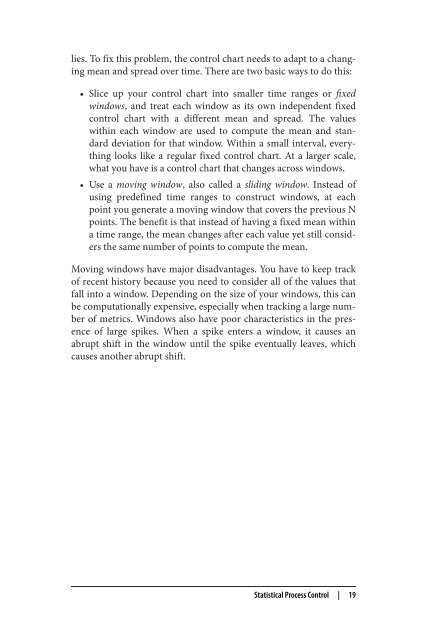Anomaly Detection for Monitoring
anomaly-detection-monitoring
anomaly-detection-monitoring
Create successful ePaper yourself
Turn your PDF publications into a flip-book with our unique Google optimized e-Paper software.
lies. To fix this problem, the control chart needs to adapt to a changing<br />
mean and spread over time. There are two basic ways to do this:<br />
• Slice up your control chart into smaller time ranges or fixed<br />
windows, and treat each window as its own independent fixed<br />
control chart with a different mean and spread. The values<br />
within each window are used to compute the mean and standard<br />
deviation <strong>for</strong> that window. Within a small interval, everything<br />
looks like a regular fixed control chart. At a larger scale,<br />
what you have is a control chart that changes across windows.<br />
• Use a moving window, also called a sliding window. Instead of<br />
using predefined time ranges to construct windows, at each<br />
point you generate a moving window that covers the previous N<br />
points. The benefit is that instead of having a fixed mean within<br />
a time range, the mean changes after each value yet still considers<br />
the same number of points to compute the mean.<br />
Moving windows have major disadvantages. You have to keep track<br />
of recent history because you need to consider all of the values that<br />
fall into a window. Depending on the size of your windows, this can<br />
be computationally expensive, especially when tracking a large number<br />
of metrics. Windows also have poor characteristics in the presence<br />
of large spikes. When a spike enters a window, it causes an<br />
abrupt shift in the window until the spike eventually leaves, which<br />
causes another abrupt shift.<br />
Statistical Process Control | 19




